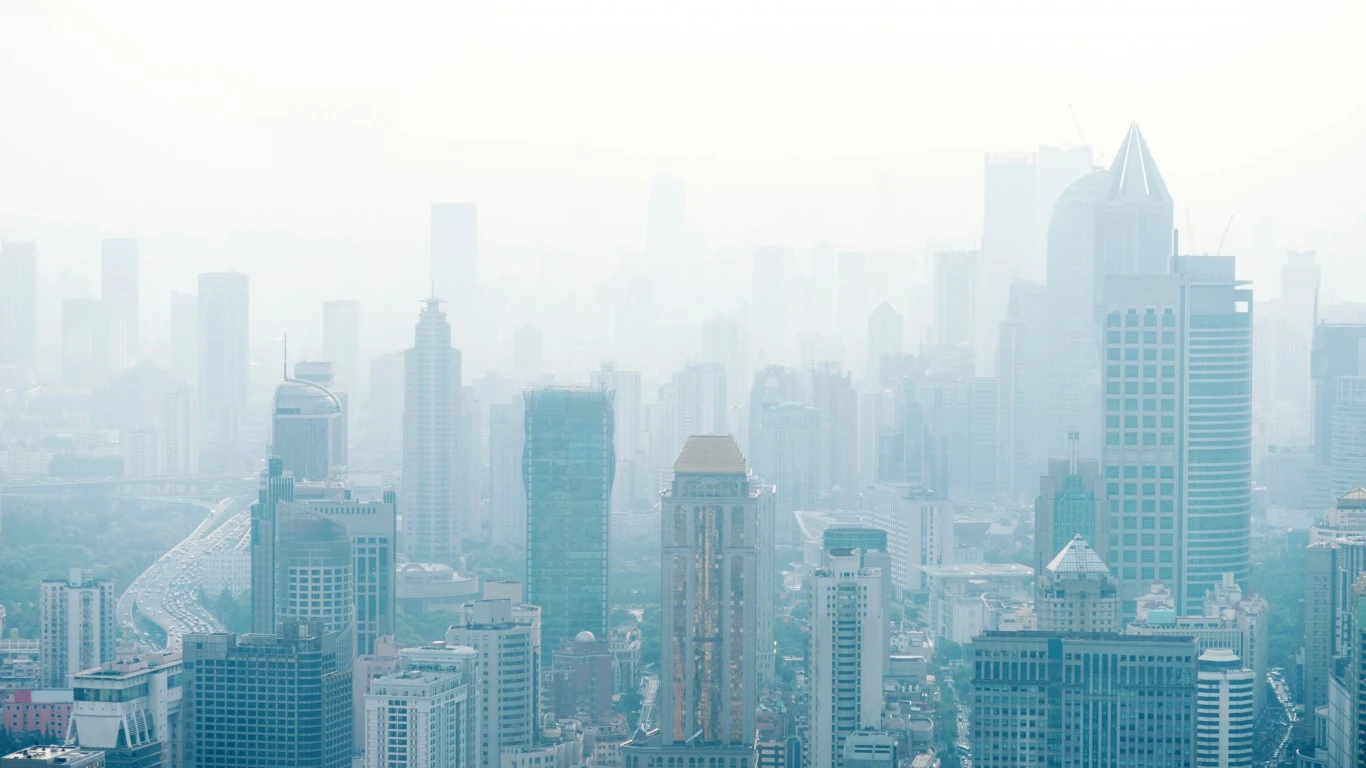
The air we breathe contains all kinds of tiny solid or liquid aerosols that can irritate the respiratory system (think tree pollen, wind-swept dust, and even viruses), but the greatest global airborne health risk is from the smoke plumes emitted by industrial activity, power generation, motorized vehicles, widespread garbage burning, and endemic domestic use of coal or wood to produce heat. (These are the 25 countries increasing emissions the fastest.)
The more harmful particles are the smallest ones, technically known as PM2.5 and defined as particulate matter that is 2.5 microns or smaller in diameter — or about 36 times smaller than a grain of fine beach sand. These microscopic pollutants penetrate into the deepest territories of the body and can be a major contributing factor to such conditions as asthma, stroke, heart and lung diseases, and more. Some evidence suggests it can also hobble brain development in children.
The World Health Organization reduced in September 2021 its air quality guideline for this fine particulate matter to 5 micrograms per cubic meter of air. A recent study of air-pollution monitoring data from 6,475 cities in 118 countries found that 97% of these places do not meet the WHO’s new PM2.5 guideline for healthy air.
To identify the 25 countries with the worst air pollution in the world, 24/7 Wall St. reviewed air quality data from the IQAir 2021 World Air Quality Report. Countries were ranked by PM2.5 annual average concentrations in micrograms per cubic meter (μg/m3). IQAir only used PM2.5 air quality data generated by ground-level monitoring stations. Population figures came from the World Bank and are for 2020. Causes of pollution came from the International Association for Medical Assistance to Travellers.
For the 25 countries with the worst air quality, achieving the WHO’s air pollution guideline is at best a distant goal. In November, India’s sprawling capital of New Delhi experienced a day when the PM2.5 level skyrocketed to an astonishing 706 micrograms per cubic meter of air thanks in part to Diwali holiday revelers ignoring the city’s fireworks ban. India’s annual average concentration PM2.5 level is about 58 micrograms per cubic meter, the world’s fifth highest by country in 2021.
Roughly half the global population live in these 25 countries, where the smoggiest cities tend to house the largest share of the population. The average PM2.5 concentrations in these countries range from nearly 30 micrograms per cubic meter of air in Kuwait to nearly 77 micrograms per cubic meter of air in Bangladesh. (These are 23 places where industrial air pollution is so bad it causes cancer.)





